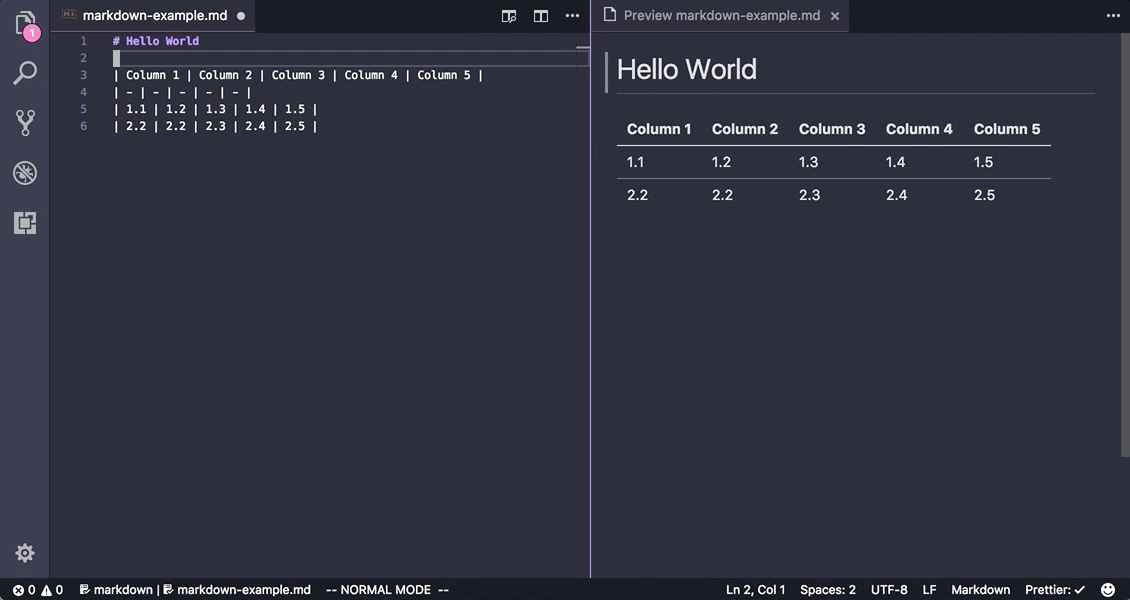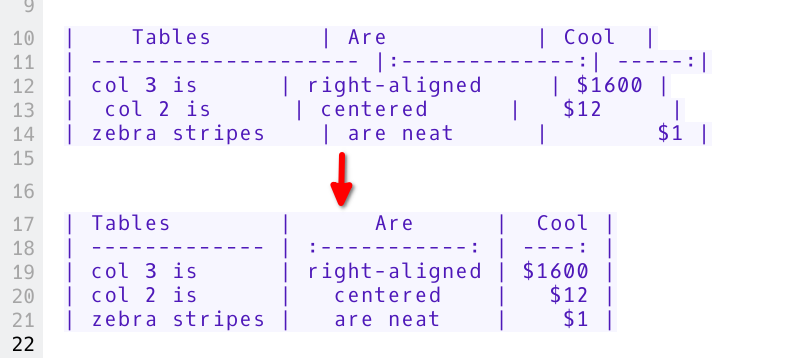

I just tested it on a table with 175 rows and 6 columns, and it took about 4 seconds on my M1 MacBook Air. I have always found my script to run slower than expected. It avoids the need to convert from column number to column letter.) (I like your idea of doing repeat with cell in _row's cells instead of my repeat with j from 1 to c for looping over the columns. Set val to formatted value of cell theCell Set thisTable to table 1 of sheet 1 of document 1 Set alphabet to "ABCDEFGHIJKLMNOPQRSTUVWXYZ"

I have a script that’s meant to be run from BBEdit, but apart from the last few lines, it’s very much like yours. On my Mac-which is admittedly quite ancient-it takes about 8 seconds to output a Multi-Markdown table from a Numbers table that has 175 rows. Note that the script is somewhat slow as I think AppleScript doesn’t perform string concatenations very quickly. I then used Python script to “tidy” the Multi-Markdown table returned by the AppleScript. This script can be executed by a Keyboard Maestro action that types or pastes its output. If _cell's alignment = auto align or _cell's alignment = justify or _cell's alignment = left then Set the justification based on how the first row is styled.

Set _md to (_md & "| " & _val as Unicode text) & " "

Generate a Markdown table row for the row's cells Set _table to the first item in _sheet's tables If there's an open document, process it So I tool a page out of playbook and created an AppleScript that converts the first table on the selected Apple Numbers sheet to a Multi-Markdown table: (*Ĭonverts the first table on the active Number's And I’ve been somewhat frustrated with how much formatting (and reformatting) is required to keep them looking nice in a plain text Markdown file. Table to Markdown repairs partially-selected tables to save you the trouble.I’ve been doing a lot of work with Multi-Markdown tables for my day job. When copying a table from a website, even though a table may look selected, often times some elements remain unselected, like. If a table is missing a header row, Table to Markdown converts the first row in a table to a header row to ensure that the table is valid Markdown. Tables copied from spreadsheet applications lack proper header rows. Table to Markdown ensures that cells in the same column are the same width your table looks tubular and tabular. Markdown tables without consistent column widths are hard on the eyes. In other words-or in other Markdown-this is what a table looks like following the GFM table spec: | Format | Grooviness | and, have their contents converted to Markdown, too. The GFM spec describes tables in Markdown like this:Ī table is an arrangement of data with rows and columns, consisting of a single header row, a delimiter row separating the header from the data, and zero or more data rows. The syntax for describing tables in Markdown was popularized by GitHub in the The GitHub Flavored Markdown (GFM) Spec. At the same time, developers wrote extensions to extend Markdown's original feature set, including an extension to represent HTML tables with Markdown's characteristic user-friendliness. Markdown tooling has also exploded since 2004, with Markdown parsers in many languages (e.g., Python-Markdown for Python Marked, Showdown, and markdown-it for JavaScript). The Google Trends data for 'markdown' shows impressive growth, especially since 2010: Since 2004, Markdown has continued to climb in popularity. This ability to generate HTML without writing HTML hasn't gone unnoticed. The Markdown version has almost 1/3 fewer characters without losing any information. Compare writing a bold link in HTML: Table to Markdown In the original Markdown spec, John Gruber describes Markdown as "a text-to-HTML conversion tool for web writers." It was designed to be easy to read and easy to write, and it certainly meets those requirements.


 0 kommentar(er)
0 kommentar(er)
